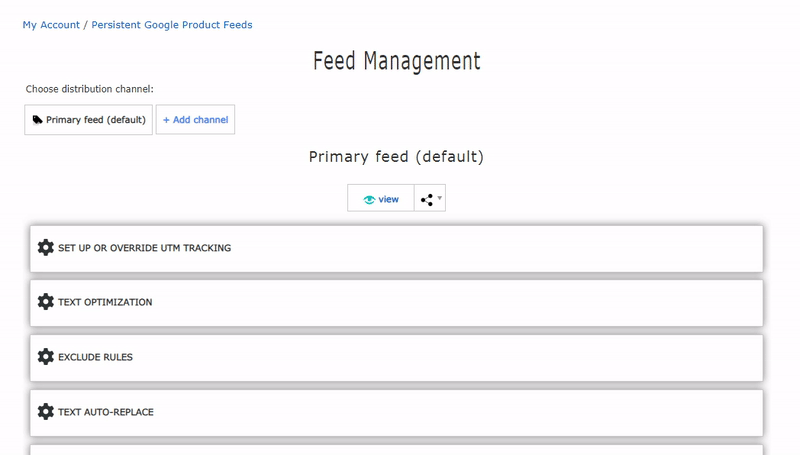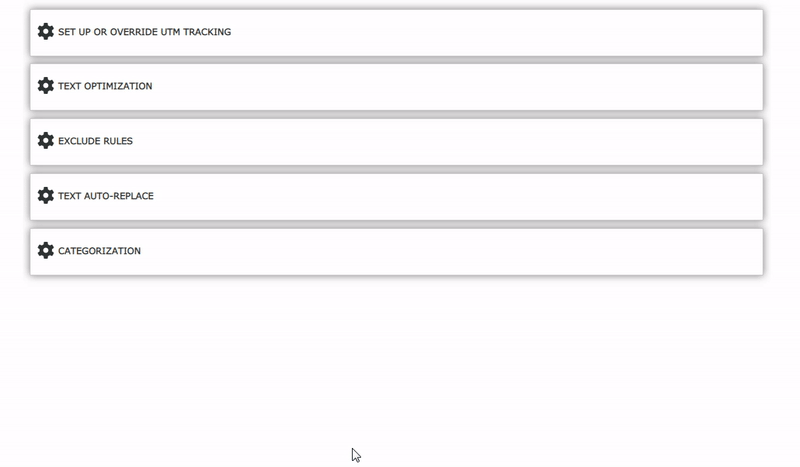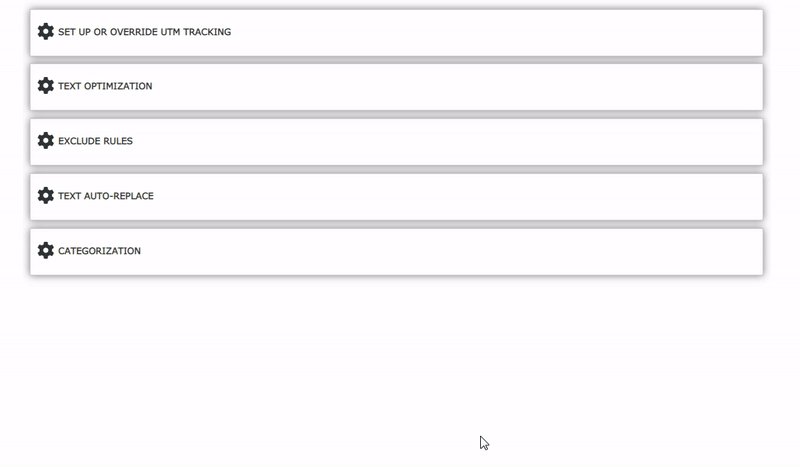- MySitemapGenerator
- Help Desk
- Creating Product Feeds
Creating Product Feeds
What requirements should the product page meet so that the MySitemapGenerator can import the information provided?
To ensure that the MySitemapGenerator can effectively import the information on the product page, certain requirements must be met:
Structured data must be implemented on all product offer destination URLs so our crawler can process the information accurately. Only one product item, corresponding to the product offer for that URL, should be included on the destination pages.
Fallback mechanism: In cases where structured data is absent, our crawler attempts to automatically detect product offer information using an AI algorithm and web page analysis. However, this may not always yield accurate results. Therefore, we strongly recommend using Schema.org markup for the best results.
If your website does not utilize product markup and is not compatible with our AI-based extraction algorithms, you can create a feed with a prepared CSV file.
- The product page must be publicly available on the internet.
- The page should feature recognizable HTML source code.
- The page must contain comprehensive details about the product being offered.
Structured data must be implemented on all product offer destination URLs so our crawler can process the information accurately. Only one product item, corresponding to the product offer for that URL, should be included on the destination pages.
Fallback mechanism: In cases where structured data is absent, our crawler attempts to automatically detect product offer information using an AI algorithm and web page analysis. However, this may not always yield accurate results. Therefore, we strongly recommend using Schema.org markup for the best results.
If your website does not utilize product markup and is not compatible with our AI-based extraction algorithms, you can create a feed with a prepared CSV file.
Processing structured data for products with reduced prices
In the product feed, there are two types of prices that can be indicated: the regular price and the current reduced price. This information can be represented on the website via Schema.org markup or Open Graph metadata.
Here is an example of Schema.org markup that utilizes the priceSpecification element:
Similarly, an example of Open Graph metadata using the sale_price element is as follows:
By implementing these structures, businesses can clearly communicate pricing information to our crawler.
Here is an example of Schema.org markup that utilizes the priceSpecification element:
<div itemscope itemtype="http://schema.org/Product">
<h1 itemprop="name" class="hidden">The Best Product Name</h1>
<div itemprop="offers" itemscope itemtype="http://schema.org/Offer">
<strike itemprop="price">1000.00</strike>USD
<meta itemprop="priceCurrency" content="USD" />
<span itemprop="priceSpecification" itemscope
itemtype="http://schema.org/PriceSpecification">
<strong itemprop="price">900.00</strong>USD
<meta itemprop="priceCurrency" content="USD"/>
(Offer valid until 2029-01-12)
<meta itemprop="validThrough" content="2029-01-12T00:00:00"/>
</span>
</div>
</div>
Similarly, an example of Open Graph metadata using the sale_price element is as follows:
<meta property="og:type" content="product" />
<meta property="og:title" content="The Best Product Name" />
<meta property="product:price:amount" content="1000.00" />
<meta property="product:price:currency" content="USD" />
<meta property="product:sale_price:amount" content="900.00" />
<meta property="product:sale_price:currency" content="USD" />
By implementing these structures, businesses can clearly communicate pricing information to our crawler.
Where can I learn more about Schema.org markup and the Open Graph Protocol for products?
If you would like to learn more about Schema.org markup, you can explore the following resources:
For more information on using Open Graph:
- https://schema.org/Product
- https://developers.google.com/structured-data/rich-snippets/products
- https://yandex.ru/support/webmaster/supported-schemas/goods-prices.xml
For more information on using Open Graph:
How to check structured data on product pages?
You can check the correctness of filling Schema.org structured data using the Schema markup validator.
How can I speed up website crawling?
To enhance the speed of website crawling, try to limit the crawler's access to various informational pages, such as articles, reviews, and similar content. By doing this, the crawler won’t spend time processing these pages, which can significantly expedite the overall crawling process, especially when there are numerous pages. You can use filters or implement specific restrictions in your robots.txt file to exclude these informational pages.
What is the difference between the number of crawled pages and the number of imported products?
The number of crawled pages refers to the total count of pages on a website that our crawler has analyzed. This includes all processed pages, such as the homepage, pagination pages, and potentially additional sections depending on the website's structure, like blog or news articles, reviews, and other informational pages (e.g., contact details, shipping information, etc.).
How to create additional sub feeds?
Go to Feed Management and click Add channel, select the desired channel in the list and click Add.


How do I exclude a product from my data feed?
To exclude a product from your data feed, follow these steps:
You can create exclusion filters for each sub-feed separately.

- Go to Feed Management.
- Click on the Exclude Rules tab.
- Click on Create Rule.
- Select a tag and enter a filter value.
- If you need to create additional rules, repeat steps 3 and 4 for each new rule.
- Click Apply.
You can create exclusion filters for each sub-feed separately.

How do I create an auto-replace rule for feed data?
Go to Feed Management, open the Text Auto-Replace tab and click Create Rule. Select a tag, enter Find What and Replace With values. Repeat the steps for each new rule if you need to use more than one. Then click "Apply". You can create separate auto-replacement rules for each sub feed.


How do I use Feed Preview?
Click the View icon to display the product catalog. Click on the view icon to switch the display mode.
Can’t find the answers you’re looking for? We’re here to help.
Contact support
